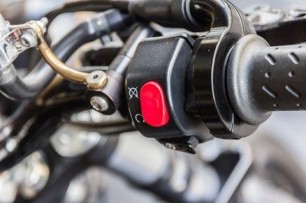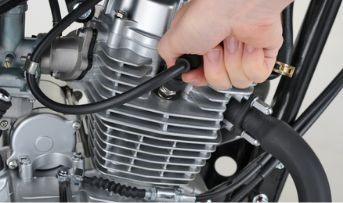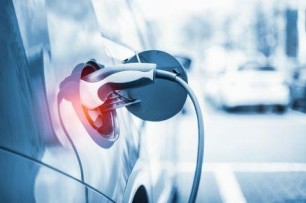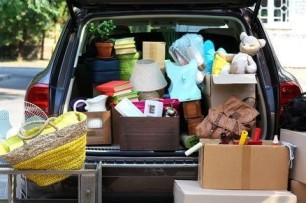General Insurance Blogs, Articles & Updates by - Magma HDI
Have us call you
- RENEW YOUR POLICY
- BUY NEW POLICY

Did you know there exist different types of drivers? What is your type
India has a massive population of automobile owners plying their vehicles on the roads daily. Spotting people with varying personalities and driving habits is common. They exhibit different skills and traits, which can broadly divide drivers into the following six categories.
1. The learner:
Learners are drivers who are new to this experience. They have recently started to drive vehicles and are trying to be perfect at it by practicing and driving regularly. Since they are not pros at driving, they are usually submissive and try to be helpful and cooperative with other drivers on the road.
They drive slowly and carefully and may sometimes show nervousness while driving. Sometimes it can be annoying to drive behind a learner because they can brake suddenly and stop abruptly on the road. Also, they swerve their cars when changing lanes while trying to be in the right lane.
2. The distracted driver:
This is the most common type of driver in the recent era of social media and telecommunication. They try to answer every call and reply to messages they receive while driving. They tend to behave as if the world will stop if they do not answer their phones or make that call.
They display signs of anxiety and tend to check their social media feed. Many even try to record videos and click pictures while driving, putting everyone around them in danger of an accident.
3. The speeding driver:
Such drivers tend to drive their vehicles at high speeds, often above the recommended speed limit, inviting risk and increasing the possibility of accidents. They behave as if the world's end is near and they must reach their destination before it finishes.
Such drivers usually drive rashly and pose a risk to other vehicles around them. High speed means lesser control of their vehicles. Hence, one should avoid getting into a street race and let them pass quietly. Otherwise, you may risk your and your co-passengers' lives unnecessarily.
4. The violent driver:
Road rage cases have been on a high in India in recent years. They are due to drivers belonging to this category. Such drivers lose their cool on the roads due to heavy traffic and start fighting with other drivers around them.
They start driving rashly, dangerously overtaking other vehicles, and swerving their cars wildly. They can even stop abruptly, enter into brawls, and attack another driver if the situation worsens. People tend to vent their frustration on the roads, creating unnecessary chaos.
5. The honkers:
This category of drivers believes they can remove the traffic in front of their vehicle by constantly honking. Doing so adds immensely to the already high noise pollution around us.
As the traffic signal turns green, they will start honking as if the vehicle in front of them is driving slowly or stopping the traffic. Such drivers cause unnecessary nuisance and may display signs of a violent driver if you do not let them pass.
6. The Pros:
This is the best category of drivers, and you would want them to be around you while travelling. They show how good they are at driving and controlling the vehicle. They pay attention to the safety and comfort of the passengers in the car.
They are cautious and vigilant and avoid rash driving by following all traffic rules. Instead, they effectively find their way out of traffic without using useless honking or rash driving. Also, they avoid entering into altercations with other drivers and have good control over their emotions.
Like humans, car insurance also has several features and qualities and varies from company to company. They may differ in premium, coverage terms and conditions, inclusions, exclusions, etc. Hence, you should research thoroughly and buy the best car insurance policy as per your specific needs and a better return on investment.
Click HERE to buy the best car insurance for your car.
Disclaimer: The information provided above is for illustrative purposes only. To get more details, please refer to policy wordings and prospectus before purchasing a policy.

Let's understand the purpose of the kill switch in motorcycles
Road accidents continue to be the leading cause of death in India. In the metro cities, the need to ride at a blistering speed is overwhelming. In this process, you tend to slip the clutch while struggling to switch off the motorcycle. As the phrase goes, "Haste makes waste", it can't be more accurate. You not only risk jolting forward but also the likelihood of accidents is concerning.
As per the World Bank report, "India tops the world in road crash deaths and injuries. Around 11 per cent of all road crash deaths are witnessed in India, which corresponds to 53 accidents every hour; taking one life every 4 minutes".
By this point, you all must be wondering what can be an efficient way to eliminate this problem. The ideal solution is a kill switch to wind down a motorcycle.
This blog is a comprehensive guide to understanding the purpose of a kill switch.
With this emergency stop, you can rapidly turn off the bike without withdrawing your hand from the handle to reach for the key. To turn off the power, you just have to use your thumb. In short, this safety mechanism can save your life in an accident.
Turning off the motorcycle instantly seems like an unusual idea. But in general, while doing so, we put the bike’s mechanism at risk. The kill switch is designed in a way to mitigate this problem. It swiftly breaks the contact with the ignition coil. This is a very straightforward mechanism to shut the engine off. It is also convenient, considering how by keeping your hands on the handlebars, you can engage the kill switch more immediately during an emergency.
All in all, this is a simple, direct emergency shut-off switch that clicks the device off. It is an essential safety feature that enables the rider to turn off the motorcycle when it is impossible to do so manually.
All you have to do is press the red button. If you're a new rider, you probably spotted a scarylooking red switch on your bike's right-side handlebar. So, you now know how a kill switch looks.
In a heavier bike, the rumbling engine is silenced with this mechanism's help. It also aids in handling emergency situations without disturbing the bike's stability. You won't need to glance down to find it because it will be easy to operate after some experience. It is also a quick method to halt your bike for a brief period, to give directions, or in traffic.
Numerous motorcycles are designing advanced technologies to eliminate road accidents. While this is one way to make you feel secure, you should consider other options. In India, it is almost necessary to take insurance for your motorcycle. If it expires, you can apply for an online motor insurance renewal. It is another way to drive safely without worrying about financial losses against insured vehicles, including extensive damages and liabilities. Always keep your insurance policy up-to-date to avoid it from lapsing.
We hope the above information explains the importance of kill switch and online motor insurance renewal. It is always best to have complete knowledge about your vehicle, its parts and their use. This information can help you better understand your bike and stay protected during unfortunate events.
Click HERE to get online motor insurance renewal.
Disclaimer: The information provided above is for illustrative purposes only. To get more details, please refer to policy wordings and prospectus before purchasing a policy.

Check out these things if your two-wheeler fails to start
We can all agree that having difficulties starting a motorcycle is an unpleasant experience. Even though motorcycles are relatively basic machines, it can be challenging to identify the problem preventing them from starting.
Before starting up, the first task, which is sometimes overlooked, is to bring your bike to an open place. Your bike's startup process will depend on how long it has been standing, which may result in smoke. It is advisable to wait till the thermostat turns on the radiator fan before starting the engine. Let your air-cooled motorcycle run until you can feel the warmth emanating from the engine.
Let's examine any issues you might have with your two-wheeler failing to start.
1. Defective or dead battery:
The bike's electrical system depends on the securely mounted battery. When a twowheeler has just an electric start, the battery is the only power source for the starter motor. The motor, which requires a high voltage from the battery, can only be started if the battery has enough charge.
2. Blown-out fuses:
Blown fuses will make the motorcycle sound normal when you try to start it, but it will spin endlessly without producing any power. Even if you try to spray starter fluid into the carburetor, nothing will change since the fuse cannot send a spark to the spark plug, causing it to ignite. A blown-out fuse typically indicates a defective grounding wire somewhere.
3. Preventing the intake or exhaust:
A situation that causes starting problems is a blocked airbox or muffler exit, which can happen for any reason. Therefore, you should also check your bike's intake and exhaust systems to see whether they contain anything unwanted blocking their way.
4. Put the side stand up:
A few newer bikes may not start when the side stand is down. Your motorcycle may contain an internal code and other sophisticated sensors that prevent the ignition from turning on if the kickstand is in place.
Check to see if your bike has a side stand sensor and if it does, and the bike still won't start, examine if the switch down there is in good working order. If it's not, the bike side stand sensor might have a fault. Get this problem checked at an authorised service centre.
5. Injector clogged:
A clogged injector will attempt to turn over normally when you try to start your motorcycle, but there won't be any combustion. A clogged fuel injector is likely to blame if you are certain that the spark is occurring properly, there is gas in the tank, but still, your bike isn't starting. Fuel injectors should be checked regularly. They should be cleaned or replaced if they appear soiled and clogged.
6. Defective spark plug wire:
Motorcycle riders are accustomed to loose spark plug wires, which might happen due to jerks. To solve this issue, you don't need to visit a mechanic. Unplug and replug the connectors before starting the motorcycle again.
7. Not properly engaging the clutch:
When starting your motorcycle and the transmission is in gear, you must pull the clutch lever correctly. The clutch occasionally fails to engage properly and causes a starting issue. Put your transmission in neutral and try again in this situation.
Checking a few things off your pre-trip list helps you overcome the ignition issue of your motorcycle. Other times, a thorough overhauling is required before you get stuck on the road, in which case you must seek professional assistance. Following these procedures will help you identify the issue and arrange for the necessary repairs. Additionally, it is prudent to have 2 wheeler insurance online to acquire comprehensive coverage for damages to your bike and be stress-free regarding its repair and maintenance expenses
Click HERE to buy 2 wheeler insurance online.
Disclaimer: The information provided above is for illustrative purposes only. To get more details, please refer to policy wordings and prospectus before purchasing a policy.

Let's discuss how you can increase the range of your electric vehicle
Electric vehicles are all the rage right now. India will significantly switch from fuel-based to electric-based vehicles in the upcoming years. Countries like the USA have seen a significant chunk of their population switch to electric cars. Even in India, people drive electric scooters in metropolitan cities. Like every other vehicle, electric vehicles also require maintenance. Plus, you would need to ensure that you make the energy of your electric vehicle efficient and increase the capacity of the engines to give your vehicle a prolonged life.
Now, let's discuss the techniques and tips that can increase the range of your electric vehicle. Doing this will help you improve your car's battery life in the long run. So, let's get started.
1. Drive properly:
Sudden jerks and an increase in acceleration can adversely affect your battery as the increment would put pressure and end up draining the battery. Experimenting with your vehicle's torques and testing the high speeds sure seem very lucrative, but it will impact your battery negatively over time. You also need to ensure that you drive smoothly and operate your vehicle carefully to increase the battery's longevity and the overall functioning of your two-wheeler or fourwheeler.
2. Go easy on the air conditioners:
The usage of air-conditioners does impact the battery. Prolonged use of air conditioning depletes the battery power at a fast rate. But there are places and times when you cannot live without the air conditioner. How do you go about this issue? You can switch on the fan instead of amping up the compressor. This will help you conserve power and regulate the cool air inside the car. You can open the windows, but this slightly affects the car's aerodynamics, functioning, and operations.
3. Be careful on those brakes:
Your electric vehicle's regenerative braking helps you recover the energy lost during the sudden braking process. So, use that whenever there is a necessity for brakes. And make sure to avoid unnecessary braking as it stresses the battery into bringing the vehicle to a halt or lowering the speed out of the blue. So, take it a little easy on the brakes whenever you are driving. Also, ensure that you use the maximum regenerative setting of your car during the deceleration process. This option will help conserve all the extra power by directing it back to the battery and increasing its life.
4. Be mindful about charging your vehicle:
It would be best if you carefully charge your electric vehicle. Keeping it plugged in all the time while your car is idle in the garage is of no use. Instead, it will negatively affect the battery as it starts to self-discharge once it gets fully charged. Timing the charging of your electric vehicle's battery helps you to attain those few miles once your vehicle is fully charged and plugged out at the right time. Timing the battery charge also helps conserve electricity and increases your battery's longevity. So, it's easier on the pocket and the environment.
Some other ways to increase the range of your electric vehicle include figuring out an efficient route to your destination, packing and travelling light, keeping your tyres in check, etc.
Unprecedented circumstances indicate the level of uncertainties around our lives and possessions and how we must be careful and take mandatory steps to prepare for these situations in advance.
This is why you need to purchase motor insurance from the best motor insurance company to safeguard your vehicle in times of distress. Explore your options carefully and buy insurance from the motor insurance company, which promises to cater to your needs in the best ways possible.
Click HERE to know more about the insurance benefits provided by the best motor insurance company.
Disclaimer: The information provided above is for illustrative purposes only. To get more details, please refer to policy wordings and prospectus before purchasing a policy.

Can you buy two-wheeler insurance without inspection
As per the Motor Vehicles Act, every vehicle owner in India is legally required to purchase insurance. It is a compulsory prerequisite that serves as a preventive mechanism to protect the owner from losses from accidents and damage to the bike. Despite the mandate, many two-wheeler owners shy away from purchasing a policy due to the lengthy process and inspection.
While it may seem like an additional step in the process, inspection is an essential part of the conventional insurance procedure that makes the insurer fully aware of the bike’s condition before accepting to insure it. However, two wheeler insurance online India has become a popular and convenient alternative that facilitates comparison between different policies and allows one to skip the inspection altogether.
Why is an inspection necessary?
Buying an insurance policy is a prudent move on the owner’s behalf. It protects them from any financial losses due to accidents or damages. However, insurance companies also require comprehensive information about the insured vehicle. A physical inspection helps identify the present state of the two-wheeler and whether it complies with Government issued legal guidelines.
The process scrutinises the physical condition of your bike and its documents like PUC certificate, service records, etc., to prevent insurance fraud. This helps the insurer gauge its value and expected life, which helps determine whether they should insure your vehicle and the premium amount.
The inspection may also discover unnoticed issues with your vehicle that you can resolve before it leads to an accident.
Is inspection before insurance mandatory?
Although important, inspection is not a mandatory process. If you buy two wheeler insurance online India, you can skip the inspection by providing basic details of your twowheeler on your preferred insurance company’s website. Usually, it takes a little while postapplication for them to send your bike insurance policy.
Requisites for an inspection-less insurance.
When applying for two wheeler insurance online India, you may notice that different insurance providers have different procedures. While some may use factors like brand, period of use, model, etc., others may only ask for registration details. Typically, the process involves declaring details such as:
● Period of use
● Place of registration
● Record of previous claims
● PUC certificate
● Vehicle registration number
● Maintenance records
● Previous policy details
Circumstances when an inspection is unavoidable.
While two wheeler insurance online India is convenient, requires minimal effort, and eliminates the need for inspection, in some situations, it is inevitable to go through a check, such as
● When your previous policy lapses:
2-wheeler owners need to renew their insurance before the policy lapses or the 30- day grace period expires. During this time, when the vehicle is not insured, accidents or damages may have gone unrecognised, due to which insurers compulsorily inspect the vehicle before approving its insurance.
● When modifications are made:
Ideally, the vehicle should be left untouched without any aftermarket modification to its factory-fitted components. When modified, it becomes necessary to inspect the 2-wheeler to ensure that the additions do not adversely affect the basic functionality of the bike, which can lead to mishaps in the long run.
● When the 2-wheeler is second-hand:
Second-hand vehicles, while being cheap, are essentially weathered vehicles. They possess greater risk than new bikes and therefore need to be inspected after the ownership is transferred before altering the existing policy or purchasing new insurance.
● When the 2-wheeler has been in a recent accident:
For vehicles that have recently been in an accident, it becomes necessary to survey the extent of damage to determine its cost of repairs, current value, and insurable value.
Two wheeler insurance online India is a hassle-free way of protecting your 2-wheeler without having to go through an inspection. By following the general guidelines for safe driving and renewing your policy in time, you can easily avoid the inspection procedure
Click HERE to purchase two wheeler insurance online India.
Disclaimer: The information provided above is for illustrative purposes only. To get more details, please refer to policy wordings and prospectus before purchasing a policy.

Let’s understand why overloading a car is never a good idea
There are many instances when people overload their cars. It might be a fun road trip, a once-in-a-lifetime hike, or helping a relative or friend move. From clothes, shoes, and other accessories to the amenities like bicycles, coolers, mattresses, and more, it seems necessary to pack our whole house up before leaving for a road trip.
Similarly, when moving or helping a friend move, you try to take more and more stuff on one trip to reduce the number of rounds taken, often leading to overloading your car unnecessarily. This may result in car accidents and injuries, sometimes fatal for the passengers.
This blog tries to give you an argument against overloading your vehicle in the future.
1. Stress on the suspension:
When steering an overloaded vehicle, there's a high possibility of the weakest point giving out, thus resulting in a crash that endangers the passenger's lives and those with them on the road. It becomes increasingly difficult to steer the car in the right direction and turn safely on bends due to overloading. Your vehicle might face serious suspension issues, resulting in an unpleasant driving experience, especially on bad roads.
2. Instability:
Every vehicle is unique in how it reacts to excess weight. However, most vehicles become highly unstable as a result of excess weight. It becomes difficult to steer, and the stopping distance increases drastically, which can hamper the smooth running of your car. Sudden steering or manoeuvring is highly discouraged when a car is overloaded because it can result in a spinout.
3. Chance of blowing a tyre:
One of the biggest concerns while driving an overloaded car is that the tyres heat and blow up when they come across high degrees of pressure. There are increased chances of bursting, and at the very least, there will be increased wear and tear on the tyres, bringing maintenance issues.
4. Penalties:
You might be fined solely for the safety and well-being of fellow drivers and vehicles. After increased accidents in India due to overloading, stringent laws are being applied all across the country, and hefty fines are being imposed.
5. Compromised safety:
With an increased number of people and items in the car, it is improbable that any of the passengers will be able to put their seatbelts on. This is highly dangerous and can result in the compromised safety of everyone in the vehicle, especially if the car meets an accident.
6. Harder to apply brakes:
Brakes will take longer to stop an overloaded vehicle than a regular vehicle. This, in turn, makes it harder for the driver to react in case of emergencies and makes it highly unsafe for passengers due to the possibility of car crashes
7. Acceleration loss:
Acceleration is highly compromised when a car is burdened beyond its carrying capacity. It makes it harder for these cars to move smoothly between vehicles on a busy road, which can result in mishaps.
8. Reduced visibility:
Your rear vision will be impaired if items are packed on top of each other in the backseat. This reduces driver control and can lead to hefty fines if caught. Also, the cramped space that comes with riding with so many passengers aboard can severely hamper driver control.
9. More petrol consumption:
The engine demands more consumption of petrol to generate the power to drive the load in the car. While this may not seem like a high cost, it adds up to be a lump sum with time.
10. Discomfort:
Driving with such heavy equipment increases discomfort, and there's a high probability of a heavy object hitting your head if you apply the brakes too hard.
Although insurance rarely covers damages resulting from overloading a vehicle, it's best to research the best car insurance in India to be safe from heavy expenses if your car faces damages due to an accident. We advise you to avoid overloading your car in any case. It is not worth damaging your valuable asset and putting your life at risk for saving time and stuffing your car with excessive items. Safety should be your top priority. Therefore adapt to healthy driving practices to keep yourself protected throughout your journey.
Click HERE to know more about the best car insurance in India.
Disclaimer: The information provided above is for illustrative purposes only. To get more details, please refer to policy wordings and prospectus before purchasing a policy.

How can you outsmart pickpockets and stay safe in crowded places
Crowded places are a feast for pickpockets. They can easily pick our pockets while we move in cramped surroundings such as a busy market amidst the constant crowd nagging of people around us. Pickpockets do this so skillfully and swiftly that we are left unnoticed and outwitted. Losing our wallet can be frustrating, especially when it is loaded with important documents such as the driving licence, Aadhar card, voter id card, and even credit or debit cards. Moreover, the loss of money can be very harsh and painful for most of us.
So how can we deal with such situations? Here are some tips for outwitting pickpockets and staying safe in crowded places.
1. Move your wallet to your front pocket:
Never keep your wallet in the back pocket in crowded surroundings. Pickpockets can easily pick your back pocket, and you will hardly know it amidst the crowd. Therefore, use the front pocket of your trousers to keep your wallet. Outwit the pickpocket by keeping only those articles in the back pocket that are not very valuable.
2. Multiple wallets and pockets:
You can keep two wallets/handbags rather than just one. Keep your valuables and documents in a wallet in your front pocket or a handbag that you can keep close to you. Keep the lesser valuable products in the 2nd wallet in your back pocket. The pickpocket will be outwitted when he finds that he has taken away some useless items from your back pocket while your valuables are safe. Also, you can use multiple pockets in your bag to hide your valuables and divide your risk.
3. Do not show off:
Do not flash your expensive laptop, phone, jewellery, cash, camera, etc., in a crowded public place. Take them out only when it is necessary.
4. Lock your bags:
Carry small locks with you and lock your bag while moving in a crowded place. The pickpocket will not be able to open it in the middle of the crowd, and you will be safe.
5. Hidden pockets:
Nothing better than a hidden pocket in the front of your trousers or jeans. Pickpockets cannot reach there, no matter how much they try. Also, buy goodquality backpacks and purses with multiple hidden pockets and good build quality. The pickpocket will not be able to determine which pocket carries your valuables.
6. Disguise and hide:
Use smart hacks and disguises to outwit the pickpocket. If you need to carry valuable jewellery while going through a crowded place, hide them in your bag inside a small cardboard box. A ring can go inside a matchstick box. You can take a used burger box if you need a bigger box! Moreover, you can use a file folder to hide your laptop.
7. Carry your backpack facing the front:
While going through a crowded area or using local transport, pull the front portion of the backpack with the chain facing the front. This way, the pickpocket cannot open it from behind you.
These were some hacks you can use to outwit a pickpocket in a crowded place. Apart from these, simply go the digital way! Carry minimum possible documents with you in hard copy. Rather, carry them in soft copy format on your phone or laptop.
In case a pickpocket picks up your wallet, you lose all the important documents along with it. Do not let this happen to your bike insurance policy. Ditch those lengthy insurance papers. Buy the best bike insurance online and save yourself a fortune. You will save money on agent commissions and have a soft copy of the policy on your mobile phone. Overall, it’s a win-win situation for you and us as the insurance provider. The only loser, in this case, will be the pickpocket!
Click HERE to buy bike insurance online.
Disclaimer: The information provided above is for illustrative purposes only. To get more details, please refer to policy wordings and prospectus before purchasing a policy.

Are fibre parts covered under two wheeler insurance
Preferred amongst different economic strata, scooters and bikes help manoeuvre through tight-packed traffic and poorly maintained roads with precision. However, the lack of an effective safety system makes them a risky option, so buying the best two wheeler insurance in India is necessary to protect your two-wheeler against damages and allied losses.
While damages from accidents and maintenance costs of the 2-wheeler are covered by insurance, does the same apply to its additional fittings of glass, fibre, silicon, etc.? Read on to find out if such depreciable parts are covered by your two wheeler insurance policy.
What are depreciable parts?
With consistent use, the value of any vehicle is bound to depreciate. In two-wheelers, the primary function is served by the engine and mechanical parts. However, there are smaller parts made using relatively weaker materials, like silicon, rubber, etc., that inevitably depreciate sooner
Are depreciable parts covered under comprehensive insurance?
A third-party insurance policy is often lacking to provide coverage for depreciable parts. You may have to purchase an add-on cover for several of its excluded items, and depreciable fibre parts are one of the many partial exclusions. Generally, two wheeler insurance only partially covers the repair and replacement costs of the depreciable parts alone. Instead, they cover a marginal percentage of the expense, leaving you to shoulder the burden of the rest of the amount.
The general depreciation cost percentage.
Most two wheeler insurance applies the following depreciated cost percentages on fittings based on their material:
● Fibre: 30%
● Glass: 0%
● Nylon, Plastic, Rubber: 50%
● Battery, Tube, and Tyres: 50%
This implies that the insurer assumes the above-stated depreciation rates to affect the part and only pays the depreciated cost percentage of the repair or maintenance cost. The remaining amount is borne by the insured, which is often a significant portion of the expense.
Additionally, the vehicle’s age also determines the following approximate rate of depreciation:
● Up to 6 months: 0%
● Up to 1 year: 5%
● Up to 2 years: 10%
● Up to 3 years: 15%
● Up to 4 years: 25%
● Up to 5 years: 35%
● Up to 10 years: 40%
● Above ten years: 50%
However, an alternative is available to ensure that your insurance provider bears the expense.
Zero Depreciation Add-on Cover.
In case you have a standalone own-damage insurance or comprehensive insurance, you are eligible to purchase an add-on zero depreciation cover for your two-wheeler. By purchasing this add-on, you can claim the entire cost of repairing or replacing depreciable parts from your insurer.
Check the inclusions of policies when comparing alternatives to find the best two wheeler insurance in India that covers fibre, glass, rubber parts, etc.
Exclusions under zero depreciation add-on. Even after purchasing the add-on to the best two wheeler insurance in India, there remain some exclusions that you will have to bear, including:
● Vehicles older than five years
● Costs of over two claims during the policy period
● Machine-driven breakdown damages
● Damages due to uninsured risks
● Depreciation due to general wear and tear
When to buy zero depreciation add-on. While it is a beneficial facility, consider purchasing a zero depreciation cover if:
● You own a limited edition or premium 2-wheeler
● You live in an accident-prone area with heavy traffic
● Your vehicle is not older than five years
● The cost of individual repairs of depreciable parts is estimated to be greater than the cost of the add-on
Depreciation is an inevitable loss of asset value. Although most insurance covers do not provide for expenses relating to depreciable parts, an add-on zero depreciation cover can convert your preferred insurance into the best two wheeler insurance in India.
Click HERE to buy the best two wheeler insurance in India.
Disclaimer: The information provided above is for illustrative purposes only. To get more details, please refer to policy wordings and prospectus before purchasing a policy.


